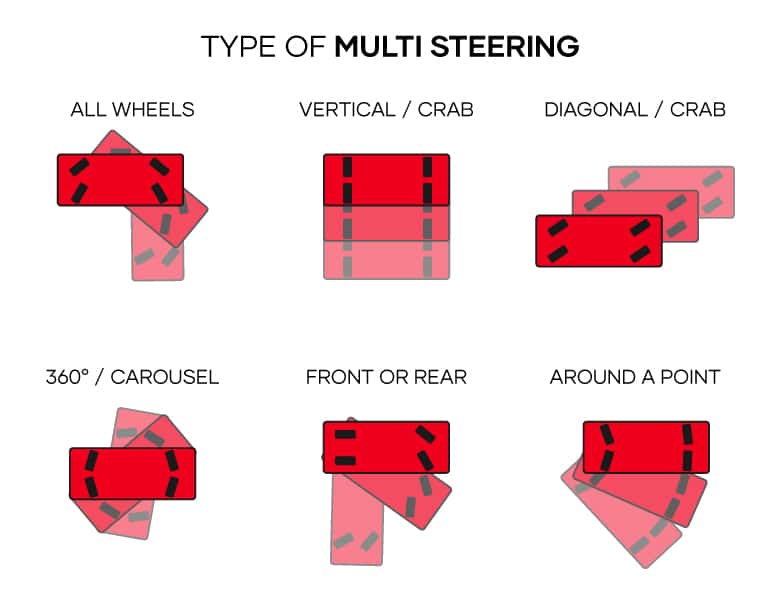Wheel Based Battery Transfer Cart
Wheel based battery transfer carts are vehicles that can move freely on flat surfaces without the need for any rail infrastructure. Thanks to their wheels, these models can be driven to any desired point within factory environments such as concrete or asphalt floors.
Steering is achieved by the movement of one or more wheels. For example, front-wheel steering carts are guided only by the front wheels, while more advanced four-wheel steering models offer six different maneuvering capabilities, including 360° rotation, crab steering, and point turning. This allows for easy navigation even in narrow aisles or complex factory layouts.
The load capacity of rail-less transfer carts varies depending on the design; today, heavy-duty battery-powered models can carry up to 500 tons.
Rail-less systems are powered by industrial battery packs (LiFePO4), enabling wireless freedom of movement.
Control is typically provided via wireless remote control (joystick transmitter) by an operator. In some models, a cabin or onboard panel may be available for the operator if needed. However, in most heavy-duty applications, the operator does not ride the vehicle but instead moves freely around the load while controlling it remotely.
Advantages of Trackless Battery-Powered Transfer Carts
The greatest advantage of trackless transfer carts is their flexibility and ease of deployment. They can be operated immediately on existing factory floors without the need for any modifications to the facility’s infrastructure. These carts can travel along various routes and reach any desired point, making them easily adaptable to changes in the production flow. It is possible to change loading and unloading locations or assign the vehicle to different tasks as needed. Models with high maneuverability can successfully operate in tight spaces or corridors requiring 90° turns. Additionally, two or more transfer carts can be used in a synchronized manner to transport a single large load together—allowing long or wide materials that cannot be handled by a single cart to be moved efficiently through coordinated operation.


